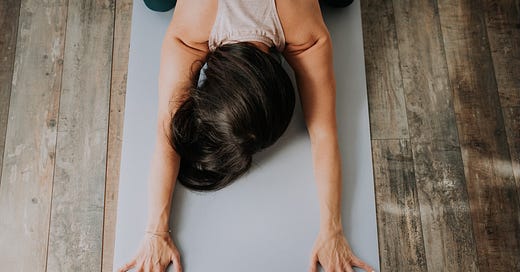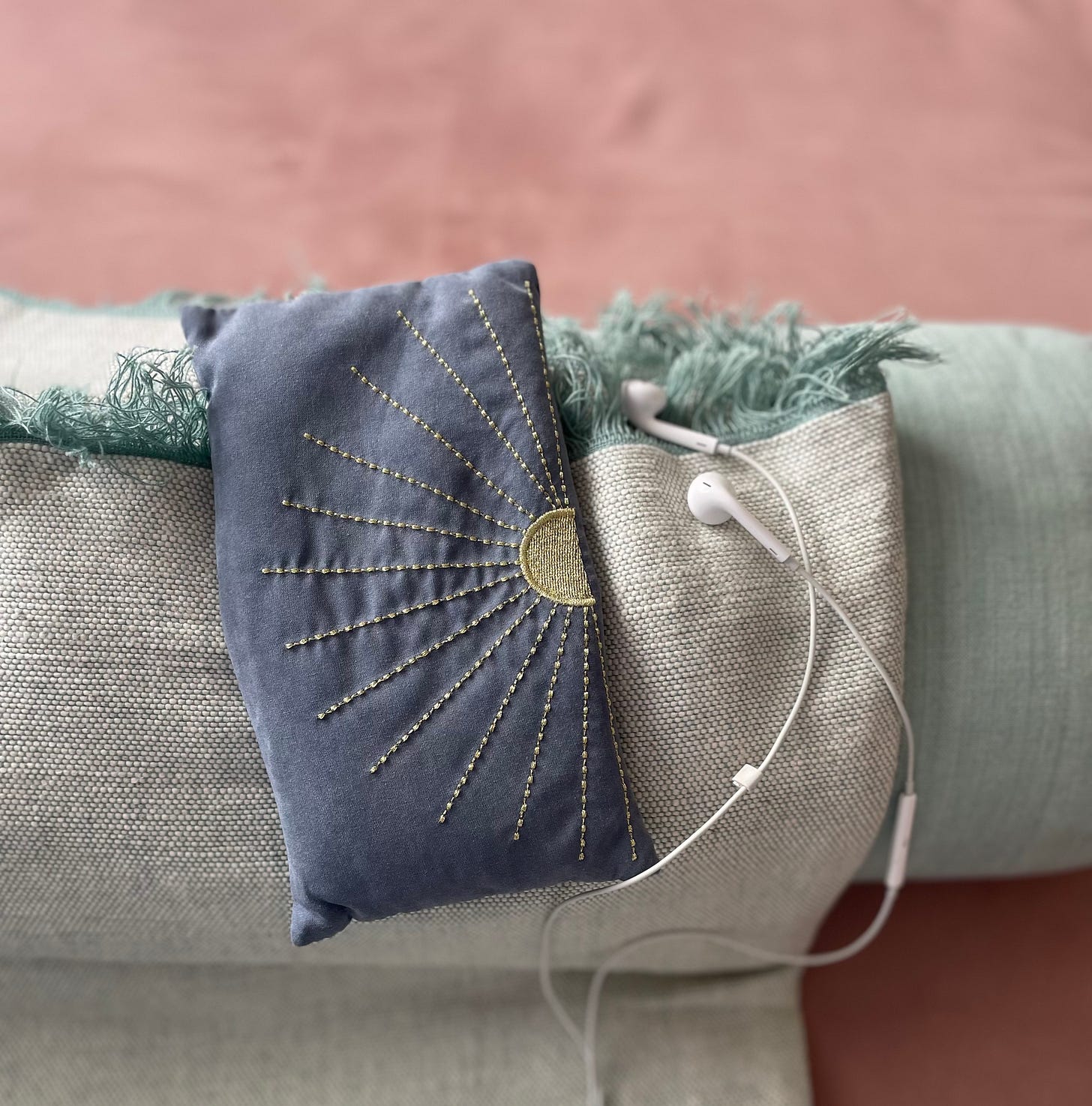Hello dear reader. If you’re new here, I’m Emma - a trauma-informed, therapeutic yoga teacher and somatic practitioner. Each month I share practices and self-care tips to nurture and nourish your body, mind and heart. I open with a personal reflection and insight on the theme for the month. Subscribe for these posts, as well as monthly meditations and live gatherings.
Here’s this month’s quiet-time in a nutshell:
Nourishing the “nectar of life”.
Countering the ‘too much’ with little pockets of rest.
Immunity-boosting sweet orange.
The mission for smoother, brighter, less angry skin.
“What’s the problem behind the problem?”
My friend says it’s bad idea but I can’t help it: I’ve been glued to a TV series called Couples Therapy. If you've not seen it, it’s a fly-on-the-wall documentary of couples in counselling sessions. Maybe I’m drawn to it as, in another life, I might have been a therapist or maybe because I’m fascinated by people’s stories. As the watcher, it’s so interesting to see the dynamics (sometimes explosive) play out and to see the issue in the couples’ blind spot. In the coaching world it’s looking for the problem behind the problem - rather than the surface level issue, it’s looking a little deeper to find what’s the real need.
When I teach community classes, I’m really curious what brings people to yoga/breathwork etc. Often people say they want to get fit or flexible or feel calmer but, when I ask a little more, a deeper pattern emerges. The person who wants “time for myself” really is deeply anxious and not sleeping. The one who practices to improve flexibility in truth feels “frazzled” and overwhelmed - her yoga practice just another thing to do. Someone says she wants to “stretch my aching body” but what she really feels is drained, distracted and guilty.
The recurrent themes in my anecdotal little study are stress, insomnia and feeling utterly worn out.
The problem might appear to be a bad back or feeling creaky but the ‘problem behind the problem’ can often be an over-expenditure, a ‘too much’. Too much exertion, too much mental stimulus, too much stress, too much load (literal or figurative).
The Ayurvedic concept of ojas describes a “nectar of life”, a subtle essence, that flows through the body and resides in the heart.
Translated as “vigour”, this essence is closely linked to our idea of immunity and is the basis of vitality, strength and overall health - both physical and mental. Think of it like a sparkle in your eye, a radiance to your skin, a spring in your step and a spiritedness.
I learned that there are two types of ojas: one is produced through nutritious food, strong digestive fire (agni), restful sleep and all the things we know contribute to a healthy lifestyle - connection to others, exercise, creative pursuit, a calm mind. The other type of ojas is inherent. This type, the para ojas (supreme ojas), is fixed and finite - there are eight drops that reside in the heart and when they are depleted it marks the end of life.
Ojas is built and sustained through practices that rejuvenate, rather than deplete. It feels vital to do so when you consider the para ojas as finite.
As we move into the summer months, we shift into the pitta season of fire and water. Longer, sunny days, warmer air and a natural inclination to be more active tempt us to do all the things - the swims, paddles, travels, picnics, al fresco socials, tasks that have been put off for a dry day. But the excess of summer’s fiery heat can be felt in the body - too much can burn up the ojas just like a fire that’s been left to burn too intensely for too long.
Choose what rejuvenates.
If the problem behind the problem is feeling depleted, stress out or sleep-deprived, what will be most replenishing for ojas? Think about practices that cultivate contentment: it might be active watersports or it might be quiet creativity.
Your invitation this month is to nourish the nectar of life.
Emma x
This month you’ll find me…
Practising this:
Yoga Nidra Napping
I’m practicing this every month but this practice of ‘yogic sleep’ deserves its own mention this month. For me, when things are ‘too much’ during the day, it manifests as too little sleep at night. To both build better habits, as well as to refresh my energy levels when sleep is light on, a short yoga nidra meditation is my go-to. I have some of my own yoga nidra meditations hosted here on Substack but I can’t listen to my own voice! Instead, I like this short 20-minute ‘mini nidra’ by Kelly Smith.
Using this essential oil:
Sweet Orange Oil
Imagine peeling a fresh orange - the sweet orange essential oil is a concentrate of the oil found in the zest, the sweet, juicy scent you smell when you break into the fruit. It’s a potent little oil that - as well as smelling delicious - has been used in natural medicine for years. The limonene found in the peel’s oil is known to enhance immunity and defends against oxidative stress (which is why it’s commonly found in skincare products). It also has anti-inflammatory effects and is proven to be a mood-booster.
Find more here
Trying this:
Probiotics
Have you heard of the gut-skin axis? I’ve been down a Google-rabbit hole lately trying to find an alternative approach to an intense eczema flare-up instead of treating the symptoms with paraffin-based creams.
The “bidirectional relationship” between the gut and the skin means that any imbalance in the gut microbiome can create a perfect storm for inflammatory conditions like eczema. I read that, as well as improving skin barrier function, probiotics can also improve skin hydration and increase cell turnover, which both help create a smoother, brighter complexion and have anti-ageing effects. (Source info here)
As well as my daily serving of yoghurt, I’m adding in this multi-strain probiotic by Wild Nutrition.
Recent favourites:
Reading:
“My Story” by Jo Malone
I was gripped with this autobiography penned by Jo Malone not only because I too love scent and blending potions, but also because of the challenges Jo has faced and overcome - struggles at school, at home and in health. It’s a story of resilience, entrepreneurship, the path to success and love.
Listening to:
“The Let Them Theory” by Mel Robbins
It’s a bit of a cheat as it’s another book that I’ve been listening to on Audible. A friend recommended this book to me which I can highly recommend to any co-dependents and people pleasers! The idea is to stop wasting energy on things (and people) you can’t control - let them. It gives you more energy to focus on what’s most important to you.







